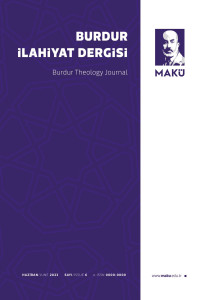Research Articles
Issue Editorial Board
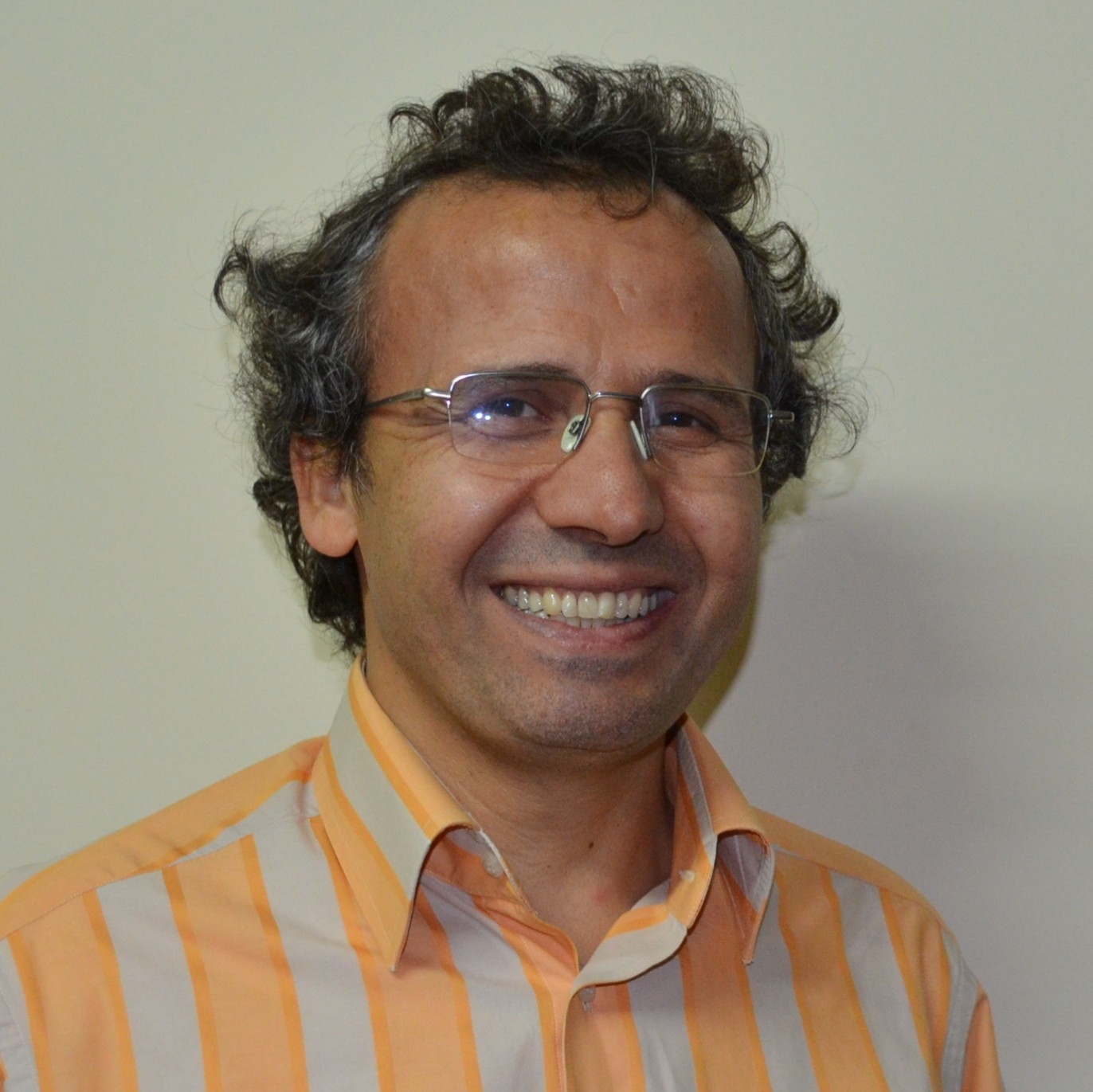
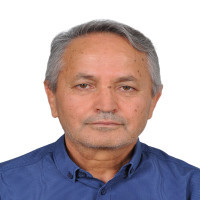
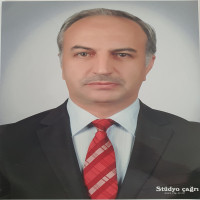

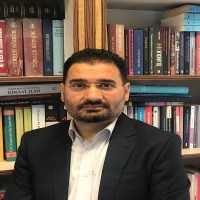

 0000-0003-3374-6063
0000-0003-3374-6063

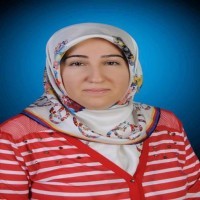
 0000-0002-6448-9373
0000-0002-6448-9373



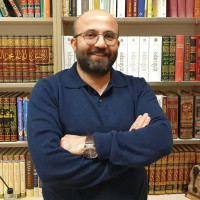
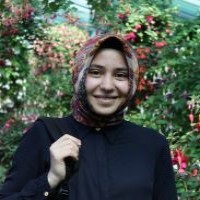
Aim & Scope
Burdur Mehmet Akif Ersoy Üniversitesi İlahiyat Fakültesi Dergisi-Burdur Mehmet Akif Ersoy University Journal of Faculty of Theology is a peer-reviewed Journal published twice a year as July and December. It aims to publish scientific research such as papers, book reviews and symposium reviews on religious studies and to share these studies with public. Makü İFD provides articles written by qualified specialists in the area of Islamic Studies (Scope: Arts and Humanities/Religion/Islamic Studies & Scope: Social and Behavioral Sciences/ Theology and Ethics). It continues to publish compelling original research articles that contribute to the development of scholarly understanding and interpretation in the history and philosophy of religious thought in all traditions and periods - including the areas of Islamic Studies.
Scope
Burdur Mehmet Akif Ersoy University Journal of Faculty of Theology publishes in "Religious Studies and Islamic Studies" (research articles, reviews, translations and memorials). The journal seeks authentic and quality works about religion and Islam in relation to the fields of humanities and social science such as ethics, anthropology, history, law, linguistics, philosophy, psychology, sociology, literature, and art.
Editorial Principles
Scholarly Content
Burdur Mehmet Akif Ersoy University Journal of Theology Faculty contains original scholarly material. Except for editorial papers, all published manuscripts are subjected to double blind peer review by at least two referees.
Topic Category
• Social Sciences - Religious Studies
• Humanities, Theology, Law, Linguistics, Philosophy, Psychology, Sociology, History, Religion, Education, Music, Literature, Art.
LC Classification
Social Sciences (General)
Keywords
Kalam, Tafsir, Hadith, Islamic Law, Sufism, Arabic Language and Rhetoric, History of Sects, Philosophy, Philosophy of Religion, Islamic Philosophy, Moral Philosophy, Turkish-Islamic Philosophy, Islamic Studies, Religious Education, Sociology of Religion, Psychology of Religion, History of Islam, Turkish-Islamic History, Turkish-Islamic Culture, Religious Music, Turkish-Islamic Music, Turkish-Islamic Literature, Islamic Arts, Turkish-Islamic Arts, Turkish-Islamic Works.
Language of Publication
Full Text Publication Language:
• Primarily Language: Turkish
• Secondary Language: English
• Third Language: Arabic
• Fourth Language: German
Content written in English and Latin Alphabet:
• Article title: Turkish & English
• Author name: Turkish (in Latin Alphabet)
• Author address: Turkish (in Latin Alphabet)
• Keywords: Turkish & English
• Bibliography: Turkish (in Latin Alphabet)
Full Text: Turkish (in Latin Alphabet)
Manuscripts Submissions
Submitted articles must be in accordance with the purpose and scope of the journal. Original, previously unpublished manuscripts that are not under evaluation in another scientific publication organ and whose content and submission have been approved by the author are accepted for evaluation.
Audience
The academic level of the published articles is suitable for academics, researchers, graduate students and relevant academic institutions and organisations.
Article Processing Charge
During the publication of the article and the execution of the processes, no processing fee or submission fee is charged under any name from the author or the institution for the articles sent to the journal or accepted for publication. As part of its publication policies, Burdur Mehmet Akif Ersoy University Journal of Theology Faculty does not accept sponsorship or advertisements. All charges of Burdur Mehmet Akif Ersoy University Journal of Theology Faculty are covered by Burdur Mehmet Akif Ersoy University.
Originality of Articles
Burdur Mehmet Akif Ersoy University Journal of Theology Faculty does not want to publish material that has already appeared in full elsewhere. However, published articles in a foreign language may sometimes be processed. Papers presented at scientific meetings may be published provided that the necessary explanations are made.
Model of Peer Review
The editor ensures that the manuscripts go through a fair double-blind review and, if the article conforms to the formal principles, it submits the incoming article for the evaluation of at least two referees from the country and/or abroad. If the referees deem it necessary, the referees approve the publication of the manuscript after the requested changes are made by the authors. Editors mediate all interactions between reviewers and authors. Time in Review: Average 60 Days / 8 Weeks.
The Best Practice of COPE
Burdur Mehmet Akif Ersoy University is committed to the highest standards in publishing ethics. Burdur Mehmet Akif Ersoy University Journal of Theology Faculty accepts the Principles of Transparency and Best Practice in Scholarly Publishing of the Committee on Publication Ethics (COPE).
Prevent Plagiarism
Authors submitting articles to Burdur Mehmet Akif Ersoy University Journal of Theology Faculty are deemed to have declared that they have not committed any ethical violations. The texts are analysed for plagiarism/similarity through Turnitin software. The plagiarism/similarity rate determined by the Editorial Board is 20%. The main measure of similarity is the author's compliance with the rules of citation and citation. If the similarity rate appears to be 1%, but citation and quotation are not done properly, plagiarism may still be in question. In this respect, citation and quotation rules should be known and carefully applied by the author: www.isnadsistemi.org
Plagiarism, duplication, false authorship/denied authorship, research/data fabrication, article slicing, slicing, copyright infringement and concealment of conflict of interest are considered unethical behaviors. All articles that do not comply with accepted ethical standards are removed from the publication. This includes articles with possible irregularities and inconsistencies detected after publication.
Correction, Retraction, Expression of Concern
If the editors identify minor errors in the published article that do not affect the findings, interpretations and conclusions, they may consider publishing a correction. The editor should consider retraction if major errors and/or misconduction that invalidate results and conclusions are detected.
Editors should consider publishing an expression of concern if there is a possibility of research or publication misconduct by the authors and the authors' organisations are not investigating the case or are drawing unfair conclusions. With regard to correction, withdrawal or expression of concern, the COPE and ICJME guidelines are taken into account.
The Group of Turkey Editors Workshop
Burdur Mehmet Akif Ersoy University encourages editors to be in contact with other editors, as they think it will be useful for them. Our editors are members of the Turkish Editors Workshop Group.
Record of Peer-Review Process Records
Burdur Mehmet Akif Ersoy University takes the task of scientific review extremely seriously. Burdur Mehmet Akif Ersoy University Journal of Theology Faculty archives and preserves all records of article publication processes.
Citation Style
Articles should be prepared according to the Isnad Citation System 2nd Edition (Footnoted).
ISNAD Turkish (PDF)
ISNAD English (PDF)
ISNAD Arabic (PDF)
ISNAD Persian (PDF) (Link verilecek)
Abstract and Keywords
Manuscripts, should contain 150-250 word abstracts and 5-8 keywords to facilitate electronic search.
Authorship and Contributorship
After the article is submitted to the Journal for publication, the names of the authors cannot be removed from the article without their written permission. Likewise, a new name cannot be added and the order of authors cannot be changed.
Contribution Rate Statement
In the manuscript, the contribution rate statement of the researchers, support and acknowledgment statements, if any, and conflict of interest statement should be stated.
Publication of Studies Based on Surveys and Interviews
Burdur Mehmet Akif Ersoy University Journal of Theology Faculty adopts the "Code of Conduct and Best Practice Guidelines for Journal Editors" and "Code of Conduct for Journal Publishers" of the Publication Ethics Committee (COPE) in order to create ethical assurance in scientific periodicals. In this context, the following points should be followed in the manuscripts submitted to the journal:
• For research conducted in all branches of science that requires ethics committee approval ethics committee approval should be obtained, this approval should be stated and documented in the article.
• In research that requires ethics committee permission, information about the permission (name of the committee, date, and number) is in the method section, and also on one of the first/last pages of the article; In case of reports, information about signing the informed consent/consent form should be included in the article.
Special and Additional Issue Publication Procedure
A special issue can be published in the journal once a year upon the request of the Editorial Board. All articles published in abstract and supplementary issues are also subject to a double blind peer review process.
Access to The Full Texts
Burdur Mehmet Akif Ersoy University Journal of Theology Faculty is open access journal. Readers can access to the full text of the journal without requiring registration.
Writing Rules
(The writing rules of our journal have been updated. Before submitting your work,please take into account the conformity with the writing rules)
Burdur Mehmet Akif Ersoy University Journal of Theology Faculty Writing Rules
[e-ISSN: 2757-6418]
Our journal follows ISNAD2 Citation System (with footnotes). We recommend the ZOTERO tool in order to accurately and actively adapt your references to the ISNAD2 citation system in your work. Papers submitted to the journal should not have been published anywhere before and should not have been decided to be published.
The article should not exceed 15,000 words including Öz, Abstract, Footnotes and References. (In case the limit is exceeded due to the nature of the work, the final decision-maker is the Editorial Board.)
The arrangement of article elements should be as follows:
1. English Title
2. Abstract
3. Keywords
4. Turkish Title (Maximum 10-12 words)
5. Öz (Turkish Abstract should be in the range of 150-250 words.)
6. Keywords (minimum 5, maximum 8 words)
• Arabic Title (for Arabic articles)
• Arabic Abstract (150-250) words (for Arabic articles)
• Arabic Keywords (for Arabic articles)
7. Main Text
8. Conclusion
9. Bibliography
The text should be written in Microsoft Office Word with the A4 page size.
Margins: 3 cms should be left from each edge.
Title: A title that is compatible with the content of the article and expresses the content in the best way should be chosen and should be written in bold letters, 12 Punto Times New Roman, and each word should be capitalised. The title of the article should be maximum 10-12 words. The title should be arranged according to the ISNAD2 Citation System; 0 pt from the top, 6 pt from the bottom and without indenting; it should be centre-aligned. Prepositions and conjunctions in the title should be written in lower case. In addition, titles should be in bold and italics should not be used except for book titles and special cases.
Titling based on the decimal system should be used.
Titling Example in Decimal System:
1. ________________________________________
1.1. _________________________________
1.1.1. __________________________
Author name and institution information: Since the study to be uploaded to the system will go to the referees, author name and institution information should not be written. After the manuscript is approved for publication and before it is uploaded in its final form, Name-Surname, Institutional Information (TR&ENG), email and Orcid ID should be written as specified in the article template. This information will be requested from the author later.
Abstract/Öz (Turkish Abstract): English-Turkish Abstract (150-250 words). The abstract should be in Times New Roman font, 9 pt, aligned on both sides, single-spaced and unindented. References, figure and table numbers should not be mentioned in the abstract.
Summary/Özet (Turkish Summary): Articles that are peer-reviewed and accepted for publication should be preceded by an English Summary and a Turkish Summary of at least 750 and at most 1,500 words. The abstract should be in Times New Roman, 9 pt, aligned on both sides, single-spaced. Paragraph beginnings should be indented 1.25 cm from the left; spaces should be set as 0 pt above the paragraph and 6 pt below the paragraph.
Keywords: Keywords consisting of at least 5 and at most 8 words must be given below the abstract. Each word of the keywords should be capitalised and commas should be used between them. It should be in 9-point font size, aligned on both sides, single-spaced and unindented.
Main Text: Manuscripts should not exceed 35 journal pages (15,000 words) including attachments such as pictures, figures, maps, etc. It should be written in Times New Roman font in 11 punto size; aligned on both sides; 1.15 line spacing. Paragraph beginnings should be indented 1.25 cm from the left; spacing should be 0 pt above the paragraph and 6 pt below the paragraph. The main text should be prepared according to ISNAD2 Citation System (with footnotes). Arabic expressions in the text and footnotes should be in Traditional Arabic, 11 Punto and bold characters.
Section Headings: Main, intermediate and subheadings can be used in the article, provided that they are compatible with the content. These headings should be capitalised for each word. It should be arranged according to the ISNAD2 Citation System; it should be set as 0 pt from the top and bottom, unindented and single line; it should be aligned on both sides. It should be in Times New Roman font, 11 punto size, bold.
Tables and Figures: Tables should be numbered and titled. Tables and Figures should be arranged in accordance with ISNAD2 Citation System. Tabular texts should be written in Times New Roman font with a font size of 10 punto and should be aligned on both sides.
Table and Figure captions and references, if any, should be written in Times New Roman font, 8-punto font size, aligned on both sides and single-spaced. Spacing should be set to 6 pt from the bottom and 0 pt from the top for Table and Figure descriptions; 6 pt from the top and bottom for Table and Figure references.
Tables should not extend beyond the writing area (page margins should not be violated), spaces should be set as 0 pt from the top and 6 pt from the bottom. Tables smaller than the page margins should be left aligned.
Figures should not extend beyond the writing area (page margins should not be violated), spaces should be set as 0 pt from the top and 6 pt from the bottom. Tables smaller than the page margins should be left aligned.
Images: They should be scanned in high resolution, print quality. The naming conventions in figures and tables should be followed. Figures, charts and illustrations should not exceed a total of 10 pages (one third of the manuscript).
Quotations and References: All direct quotations must be made in accordance with the ISNAD Citation System. If the direct quotation is a paragraph, it should be written in Times New Roman font with a font size of 10 punto; it should be aligned on both sides; it should be 1 line spacing. The beginning of the paragraph should be unindented, the whole paragraph should be indented 2 cm from the left and right; spaces should be set as 0 pt above the paragraph and 6 pt below the paragraph.
Footnotes Must be in accordance with ISNAD2 Citation System (with footnotes). It should be written in Times New Roman font with a font size of 9 pt; it should be aligned on both sides; it should be single-spaced. Spacing should be set as 0 pt from top and bottom.
Bibliography: It should start on the page after the conclusion.
References should be organised according to ISNAD2 Citation System.
References should be written in Times New Roman font, 11 punto size, aligned on both sides and single-spaced.
For each source, the first line should be indented from the left, and the following lines should be indented 1.25 cm from the left.
Spacing for each source should be 0 pt at the top and 6 pt at the bottom.
If more than one work of an author is included in the bibliography, the name of the author should be written again for each work.
Abbreviations: Abbreviations should be made as specified in the ISNAD2 Citation System; if the abbreviation is not specified in the ISNAD2 Citation System, the author's preference should be indicated in the description section when submitting the article.
- If an explanation is to be made at the end of the page for the title of the article, * sign should be used.
- No entry of Header and Footer information should be made.
- Page numbers should not be added.
For detailed information on citations and sources see:
https://www.isnadsistemi.org/download/isnad-2-yazim-kilavuzu/
For the Principles of Critical Editing, see:
http://www.isam.org.tr/documents/_dosyalar/_pdfler/ISAM_Tahkikli_Nesir_Esaslari.pdf
TRANSLATIONS
Article writing rules apply for translations.
The name and information of the translator should not be written in the translation.
The translation title should be the title of the translated text.
At the end of the translation title (*), the type of the translated text (article, book chapter, paper, etc.) and the bibliography of the text according to ISNAD Citation System should be added at the end of the page.
Regardless of the citation system used in the main text, footnotes must conform to the ISNAD Citation System.
Tables and Figures should be organised in accordance with the ISNAD Citation System. Tabular texts should be written in Times New Roman font with a font size of 10 points and should be aligned on both sides.
Öz, keywords, abstract and keywords should be given as in the original text. If not included in the text, 250-500 words of Öz and Abstract, Keywords and keywords should be added.
BOOK REVIEWS
Article writing rules apply for Book Reviews.
Also;
Öz (Turkish Abstract) and Abstract consisting of 150-250 words should be included.
Book Reviews should be between 500-1500 words.
If an explanation is to be made at the end of the page for the title of Book Review, * sign should be used.
ETHICS COMMITTEE DECISION
It is compulsory for studies/articles where data should be collected from individuals using scales, questionnaires, interviews and other data collection tools.
Approval must be obtained from the Ethics Committee of the university to which the author is affiliated or the organisation where the study is conducted.
Board approval should be indicated on the first page of the manuscript with the name of the board, date and number.
In the method section of the article, the start and end dates of data collection should be written.
The approval document should be attached to DergiPark as an additional file.
For studies that do not require an Ethics Committee decision, the author must upload a wet signed declaration that no ethics committee decision is required.
For TR Index's opinion on Ethics Committee approval, see.
https://trdizin.gov.tr/about#applicationAndCriterias
Ethical Principles and Publication Policy
Ethical Policies
Editorial Duty of Confidentiality
Burdur Mehmet Akif Ersoy University Journal of Theology Faculty 's editors treat all submitted manuscripts as confidential documents. People who can access the articles during the article review process: Editors, Referees and Editorial Board Members. Only if the editor suspects serious research misconduct may the editor disclose details of the manuscript to a third party without the authors permission.
Allegations of Scientific misconduct - Suspect Research or Publication Misconduct
The editor is obliged to take action if he/she suspects or alleges an ethical violation. This duty extends to both published and unpublished articles. The editor should not simply reject articles that raise concerns about possible abuses. Firstly, it must request a response from the persons suspected of misconduct. If they are not satisfied with the response, they should ask the relevant employers or institution, to investigate.
Burdur Mehmet Akif Ersoy University Journal of Theology Faculty abides the Ethics Toolkit for a Successful Editorial Office. Burdur Mehmet Akif Ersoy University Journal of Theology Faculty or its editors will not knowingly allow plagiarism, citation manipulation, data falsification, data fabrication, and other research misconduct to occur. If Burdur Mehmet Akif Ersoy University Journal of Theology Faculty’s editors are aware of any allegations of research misconduct related to an article published in their journal, they will follow COPE’s guidelines in dealing with allegations.
Reviewers should notify the Editor when they suspect research or publication misconduct. The editor is responsible for carrying out the necessary actions by following the COPE recommendations.
Burdur Mehmet Akif Ersoy University Journal of Theology Faculty undertakes implementing the COPE Flowcharts when it encounters allegations of misconduct on the following or similar issues.
• Redundant (duplicate) publication in a submitted manuscript
• Plagiarism in the article
• Suspecting of fabricated data
• Requests for change of authorship
• Suspecting of an undisclosed conflict of interest
• Suspecting of unfair or gift authorship
• Suspecting the ethical problem of the article
Complaints Procedure
This procedure applies to complaints about content, procedures or policies that are the responsibility of Burdur Mehmet Akif Ersoy University Journal of Theology Faculty or our editorial staff.
Complaints should be directly emailed to ifd@mehmetakif.edu.tr, and will be dealt with confidentially. The editor follows the procedure set out in the COPE flowchart on complaints.
Complaints are reviewed by the relevant member of the editorial team and if they cannot be resolved, the following processes are followed:
• In the case that this initial response is felt to be insufficient, the complainant can request that their complaint is escalated to a more senior member of the team.
• If the complainant is not satisfied, complaints can be forwarded to the editor-in-chief.
• If possible, a full response will be made within two weeks.
Appeal Process
Serious objections to the judgements made by the editors and referees are welcomed. If you believe that your article has been rejected due to a misunderstanding of its scientific content, please send an appeal message to our editorial team at ifd@mehmetakif.edu.tr. If, after reading your letter of objection, it appears that your objection is justified, you may be asked to submit a revised version of your manuscript. Your manuscript will then be resubmitted to the external referee process. Only one objection per article will be considered. Therefore, please include as much detail as possible in your letter of objection.
Conflicts of Interest
Conflict of interest exists when professional judgment concerning a primary interest may be influenced by a secondary interest (such as financial gain or personal rivalry). All sources of financial support received during the conduct of the research and preparation of the manuscript and the role of sponsors in the study should be explained. If there is no source of funding, this should also be stated. Examples of potential conflicts of interest that need to be disclosed include consultations, hiring, grants.
Burdur Mehmet Akif Ersoy University Journal of Theology Faculty has a declared process for handling submissions from the editors, employees or members of the editorial board to ensure unbiased review. Such manuscripts are primarily directed to other journals. If this is not possible, the author's role in the Journal will be temporarily terminated. These submissions are reviewed through a double-blind process.
The editor should not be involved in decisions about manuscripts written by him/herself or by family members. Furthermore, such a paper should be subject to all the usual procedures of the journal. The editor shall apply the ICMJE guidelines relating to the disclosure of potential conflicts of interest by authors and reviewers.
Publication Ethics Principles
Publication Ethics may be defined as a self-regulatory mechanism insisting on integrity on the part of authors, peer reviewers, and publishers to establish higher standards of editorial processing.
• Ethical researchers do not plagiarize.
• They do not misreport sources.
• They do not conceal objections that they cannot rebut.
• They do not distort opposing views.
• They do not destroy or conceal data
Burdur Mehmet Akif Ersoy University Journal of Theology Faculty adheres to national and international standards on research and publication ethics. It complies with Press Law, Intellectual and Artistic Works Law, and Higher Education Institutions Scientific Research and Publication Ethics Directive. Burdur Mehmet Akif Ersoy University Journal of Theology Faculty adopted the International Ethical Publishing Principles published by the Committee on Publication Ethics (COPE), Directory of Open Access Journals (DOAJ), Open Access Scholarly Publishers Association (OASPA), and World Association of Medical Editors (WAME). It also undertakes to comply with the Decisions of the Turkey Editors' Workshop.
Duplicate Publication
Duplicate publication is the publication of the same article or substantially similar articles in more than one journal. The editor sends back this type of article without reviewing it. If the author attempts to publish again, an embargo may be imposed on the author for a certain period of time, the journal in which the author has previously published may publicise this situation (with simultaneous announcement with the editor of the journal that published the previous article), or all of these measures may be applied together.
Simultaneous submission of the same study to more than one journal
Authors may not submit an article to more than one journal at the same time. If the editor learns of possible simultaneous submission, he/she reserves the right to consult with the other editor(s) receiving the manuscript. In addition, the editor can return the article without reviewing it or reject it without taking into account the reviews. Or it may take this decision in discussion with the other editor(s) concerned and decide not to accept submissions from authors for a certain period of time. It may also write to the authors' employers or take all of these measures together.
Publication Check for Plagiarism
Burdur Mehmet Akif Ersoy University Journal of Theology Faculty routinely screens article submissions for Plagiarism. The studies submitted for review are checked for plagiarism using the Turnitin software. The similarity rate is expected to be less than 20%. The main measure of similarity is that the author complies with the citation and citation rules. Even though the similarity rate is 1%, if the citation and citation are not duly made, plagiarism may still be in question. In this respect, citation and citation rules should be known and carefully applied by the author: www.isnadsistemi.org
Data fabrication and falsification
It is to produce data that is not based on research, to edit or change the work presented or published on the basis of untrue data, to report or publish them, to present a research that has not been done as if it has been done. Falsifying the research records and data obtained, showing the methods, devices and materials that were not used in the research as if they were used, not evaluating data that are not in accordance with the research hypothesis, manipulating data and/or results to fit the relevant theory or assumptions, falsifying or shaping research results in line with the interests of the persons and organisations receiving support.
Protection of Personal Data of Participants
Burdur Mehmet Akif Ersoy University Journal of Theology Faculty requires that all research involving personal or sensitive data or materials about participants that are not legally publicly available be subject to formal ethical review.
Dealing with allegations of Research Misconduct
Burdur Mehmet Akif Ersoy University Journal of Theology Faculty abides the Ethics Toolkit for a Successful Editorial Office. Burdur Mehmet Akif Ersoy University Journal of Theology Faculty’s editors will take reasonable steps to prevent the publication of papers where plagiarism, citation manipulation, data tampering, data fabrication, and other research misconduct have occurred. If editors become aware of any allegations of research misconduct in relation to an article published in their journal, they will follow COPE's guidelines regarding allegations.
Ethical Violation Notifications
If they notice a significant error or inaccuracy in an article published in Burdur Mehmet Akif Ersoy University Journal of Theology Faculty (ISSN 2757-6418) or if they have any complaints about the editorial content (plagiarism, duplicate articles, etc.), readers can send an e-mail to ifd@mehmetakif.edu.tr
Research Ethics
Burdur Mehmet Akif Ersoy University Journal of Theology Faculty adheres to the highest standards in research ethics and follows the principles of international research ethics as defined below. The authors are responsible for the compliance of the manuscripts with the ethical rules.
• Principles of integrity, quality, and transparency should be sustained in designing the research, reviewing the design, and conducting the research.
• The confidentiality of the information provided by the research participants and the confidentiality of the respondents should be ensured. The research should be designed to protect the autonomy and dignity of the participants.
• The independence of research must be clear and explicit; any conflict of interest or must be disclosed.
• In experimental studies, the written informed consent of the participants who decide to participate in the study must be obtained. The consent of the legal guardian of children and those under guardianship or with a recognised mental illness must be obtained.
• If the study is to be carried out in any institution or organization, approval must be obtained from this institution or organization.
• In studies with a human element, it should be stated in the "method" section that "informed consent" was obtained from the participants and ethics committee approval w
Price Policy
Hiçbir ad altında yazar veya kurumundan ücret alınmaz.
Burdur Theology Journal is licensed under a Creative Commons Attribution-NonCommercial 4.0 International License (CC BY NC).

